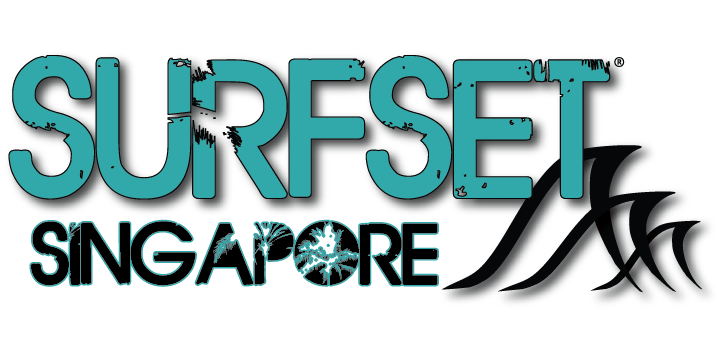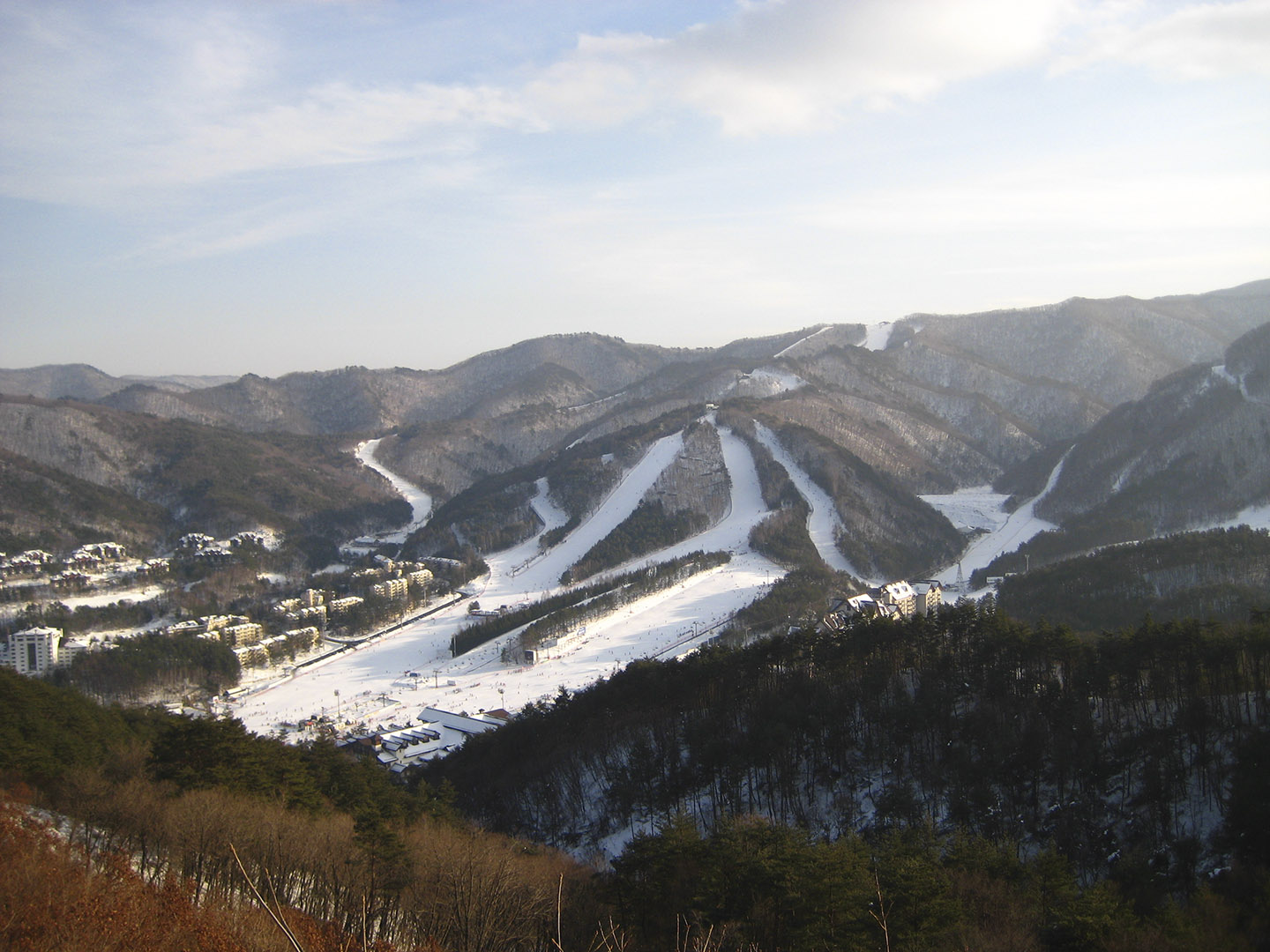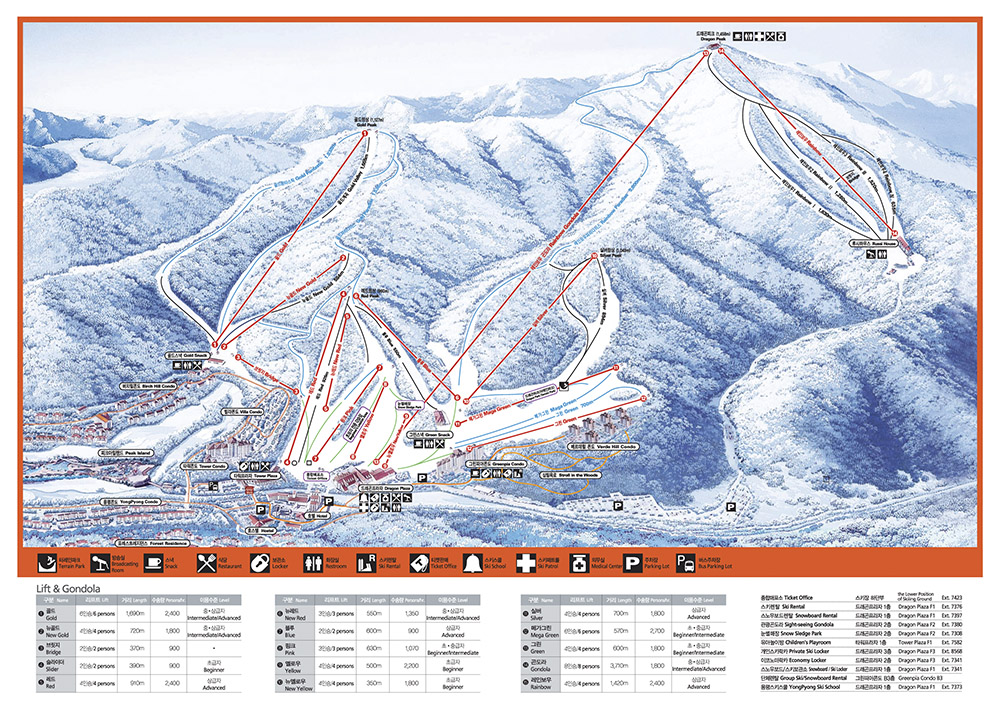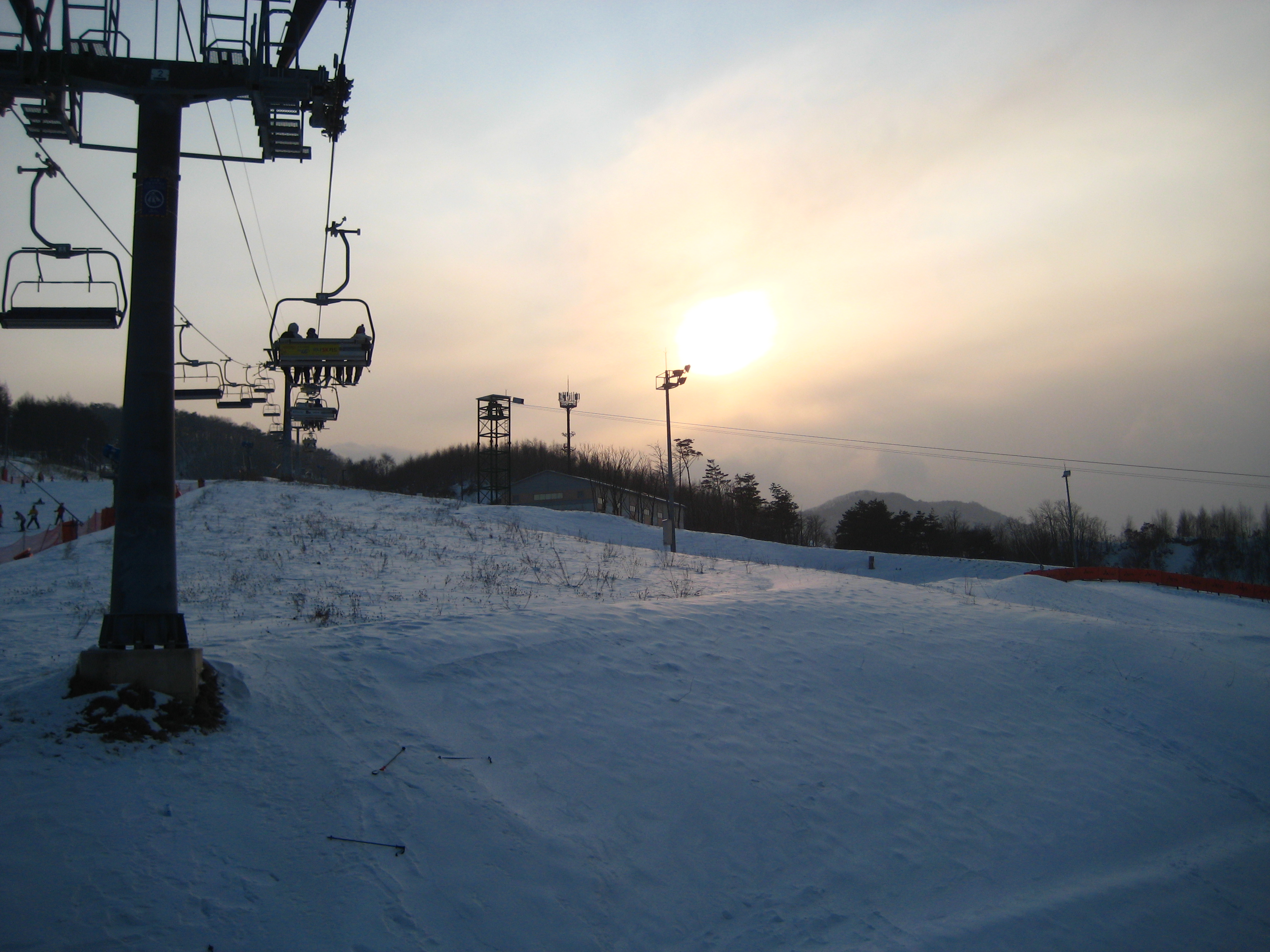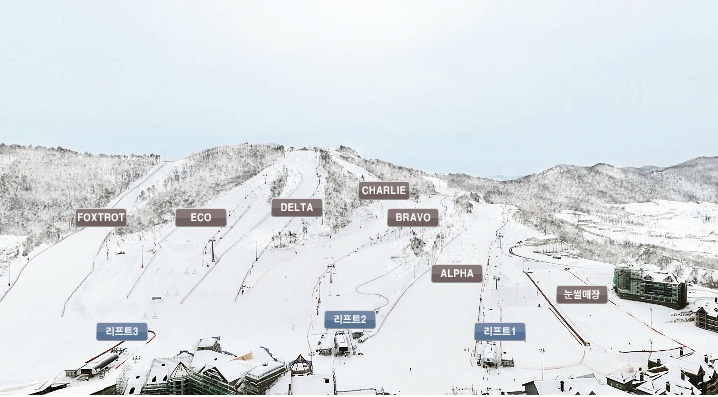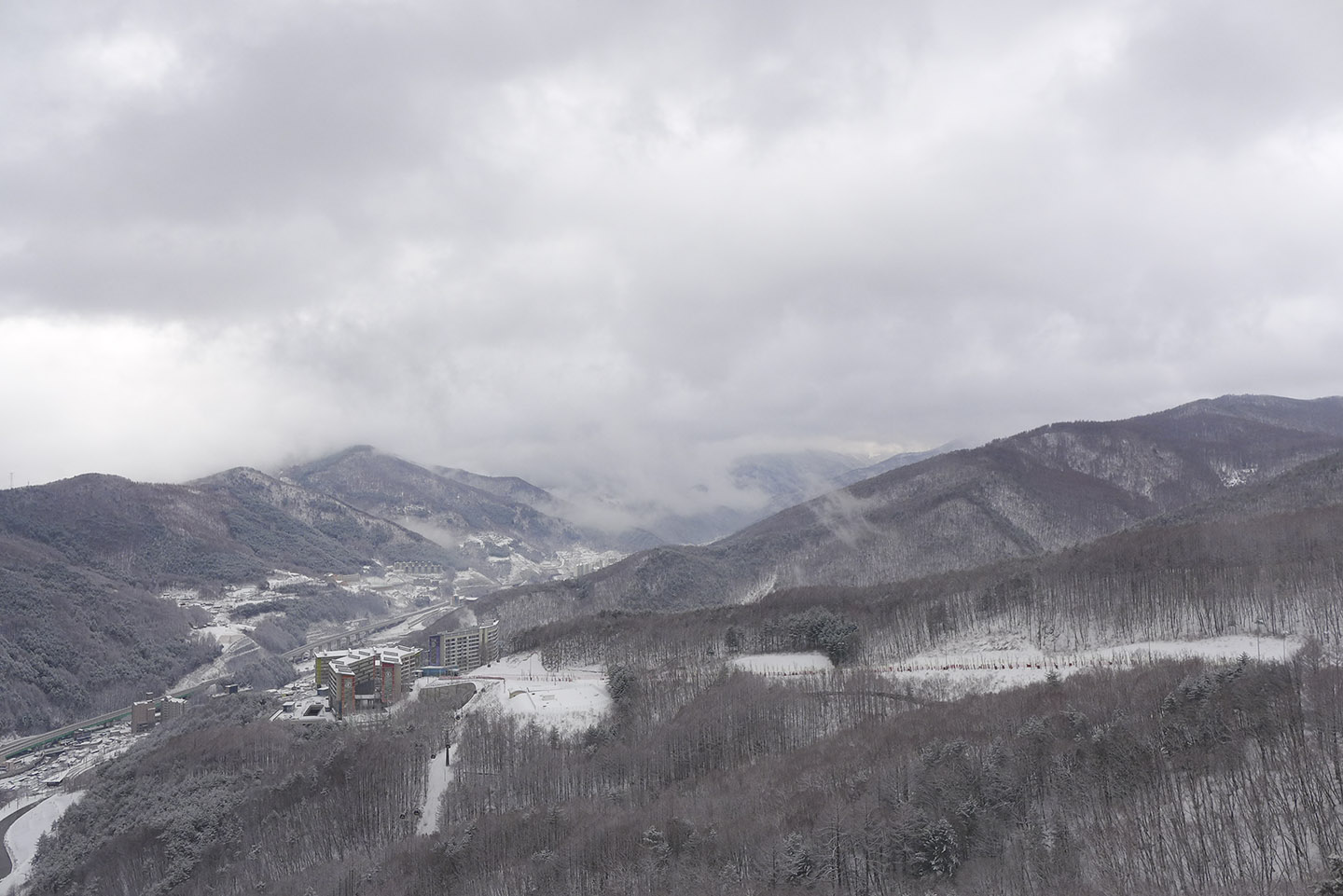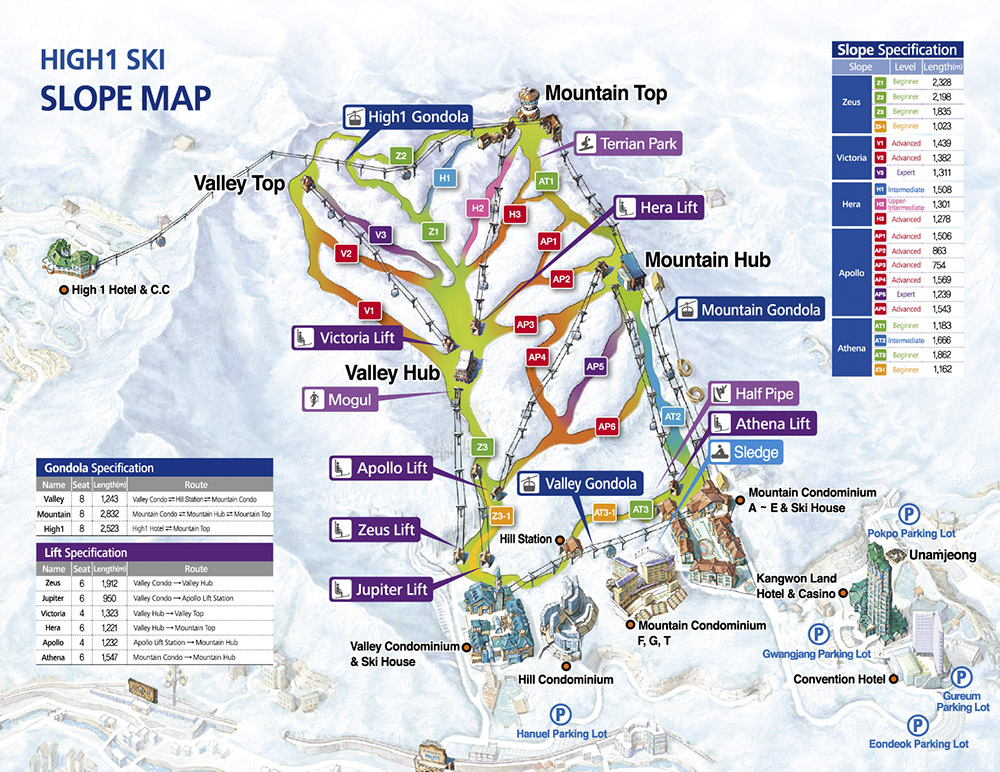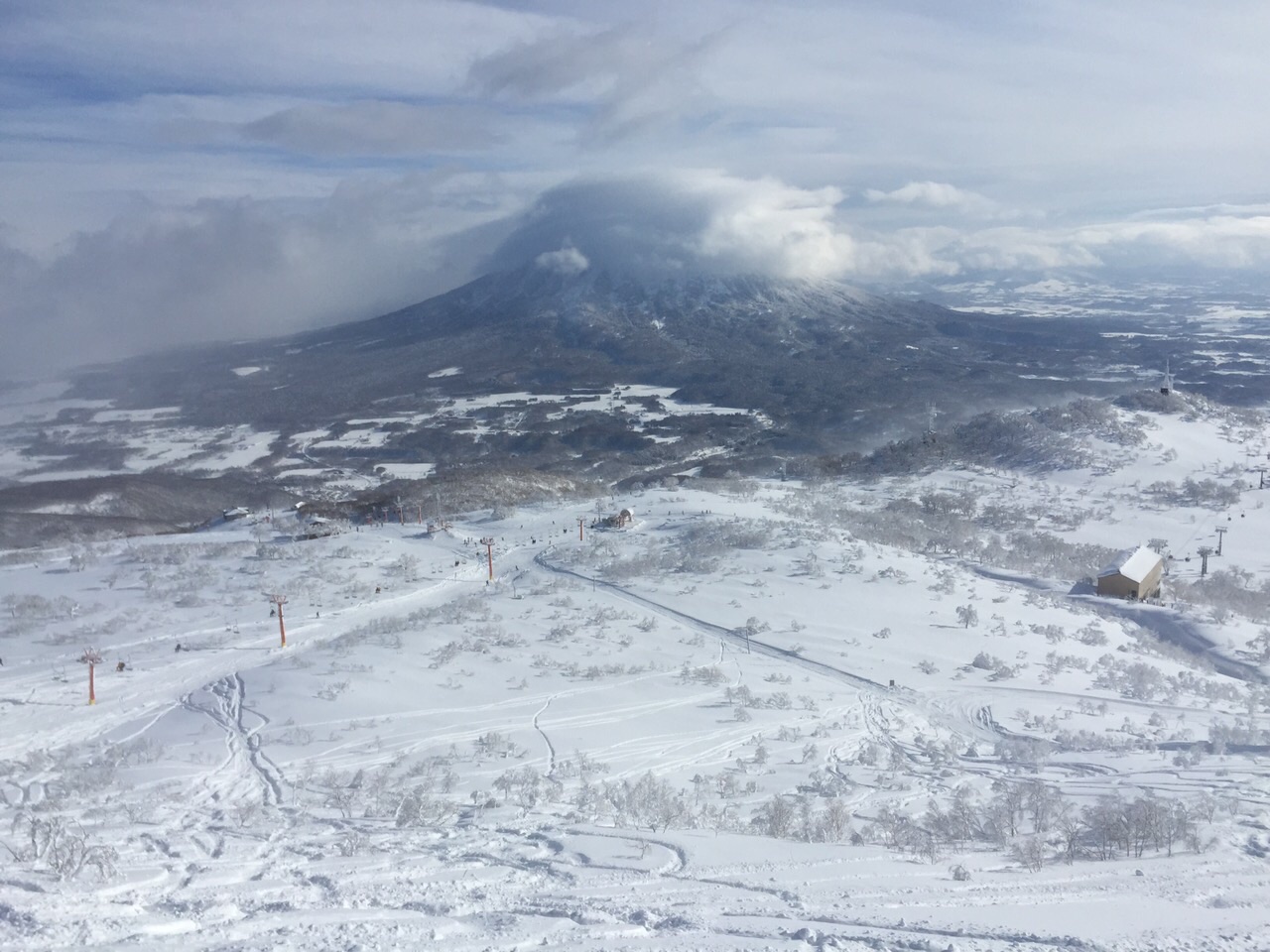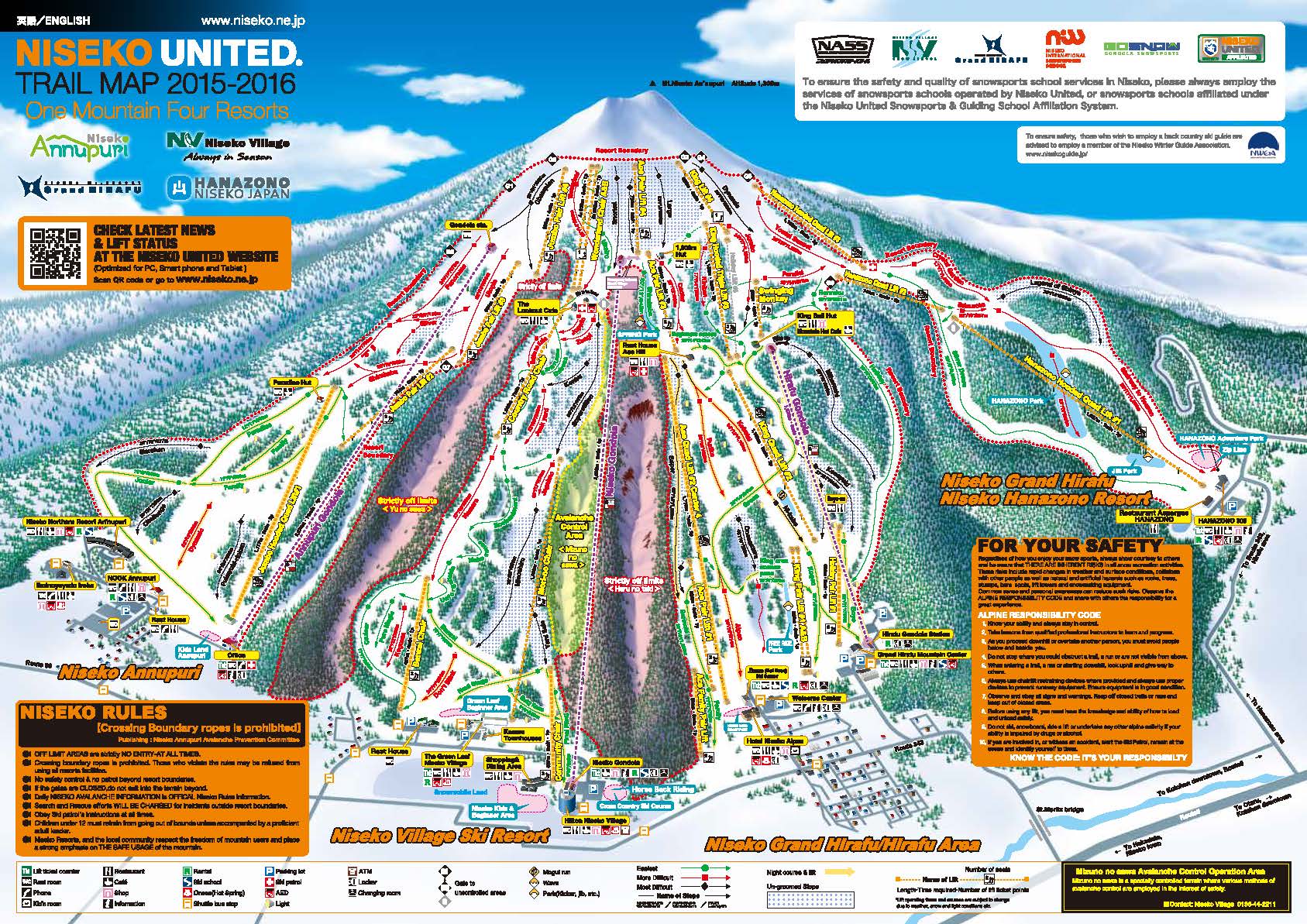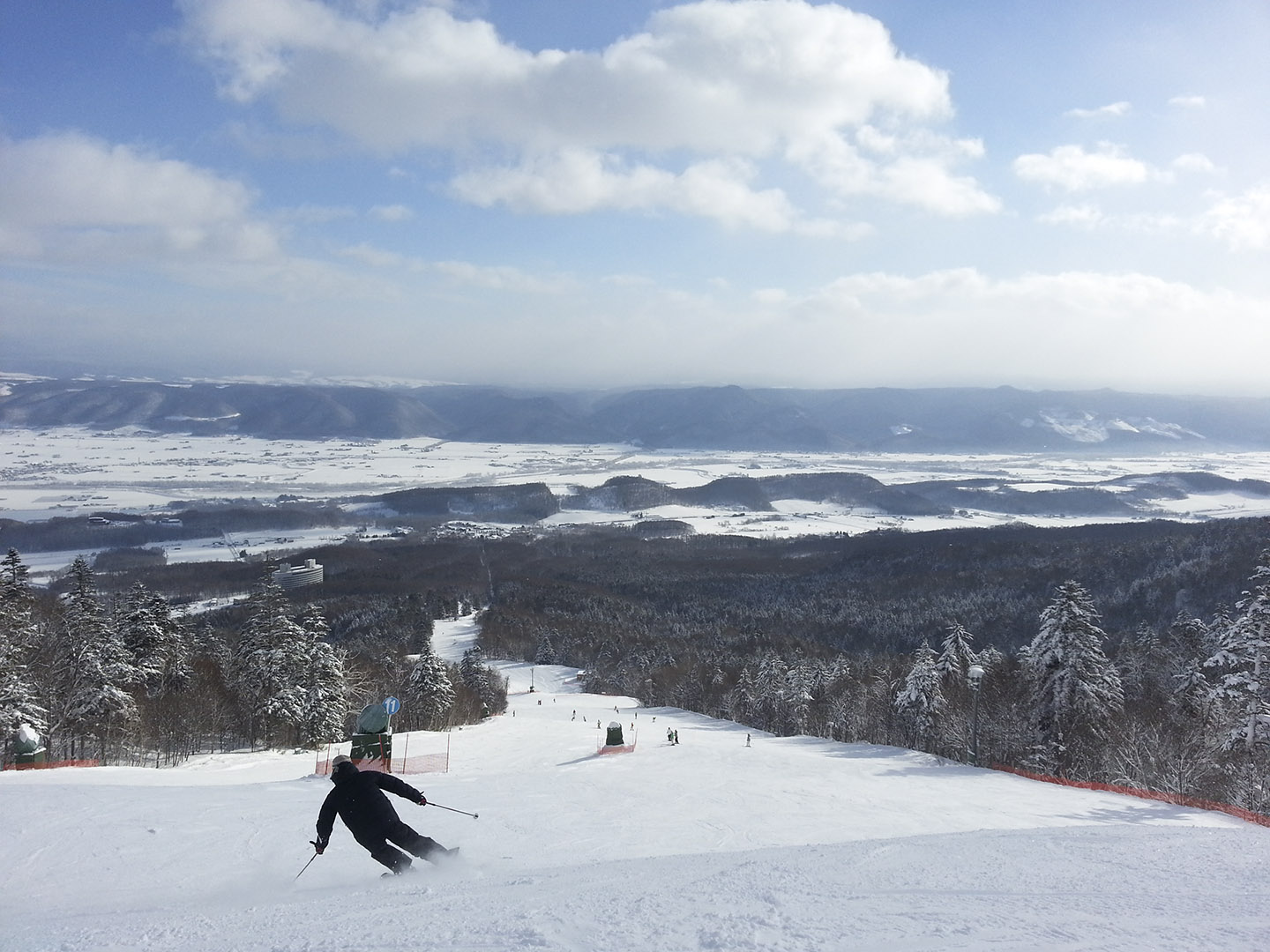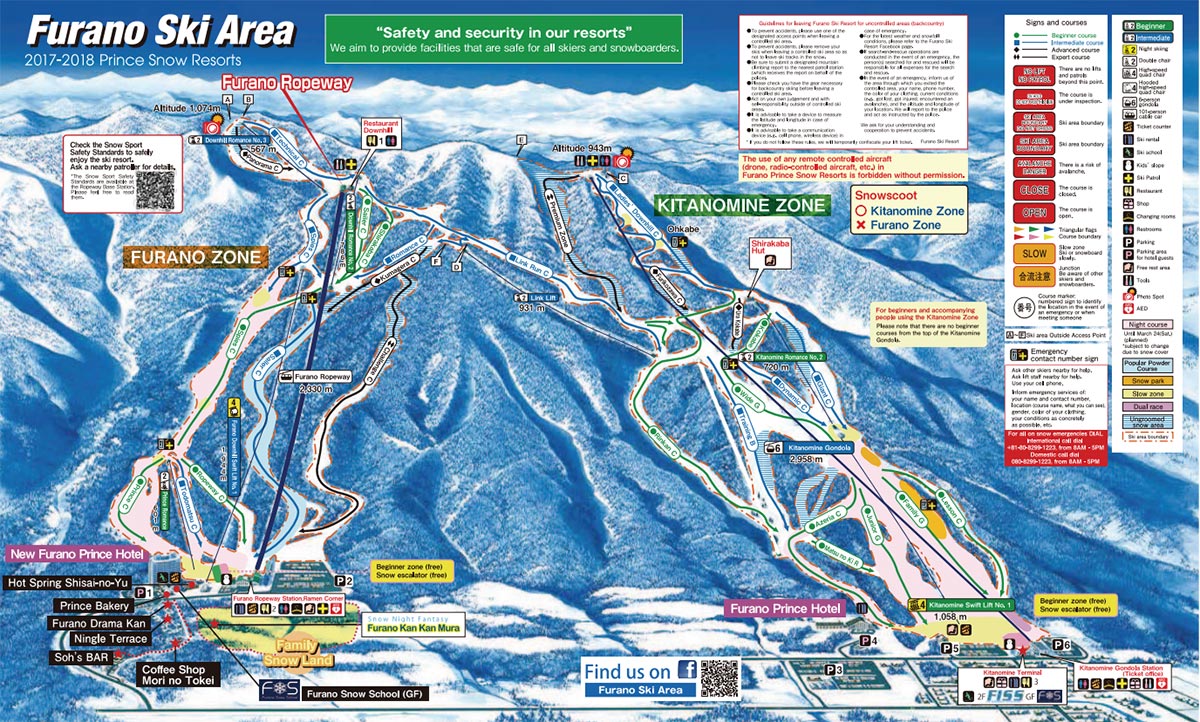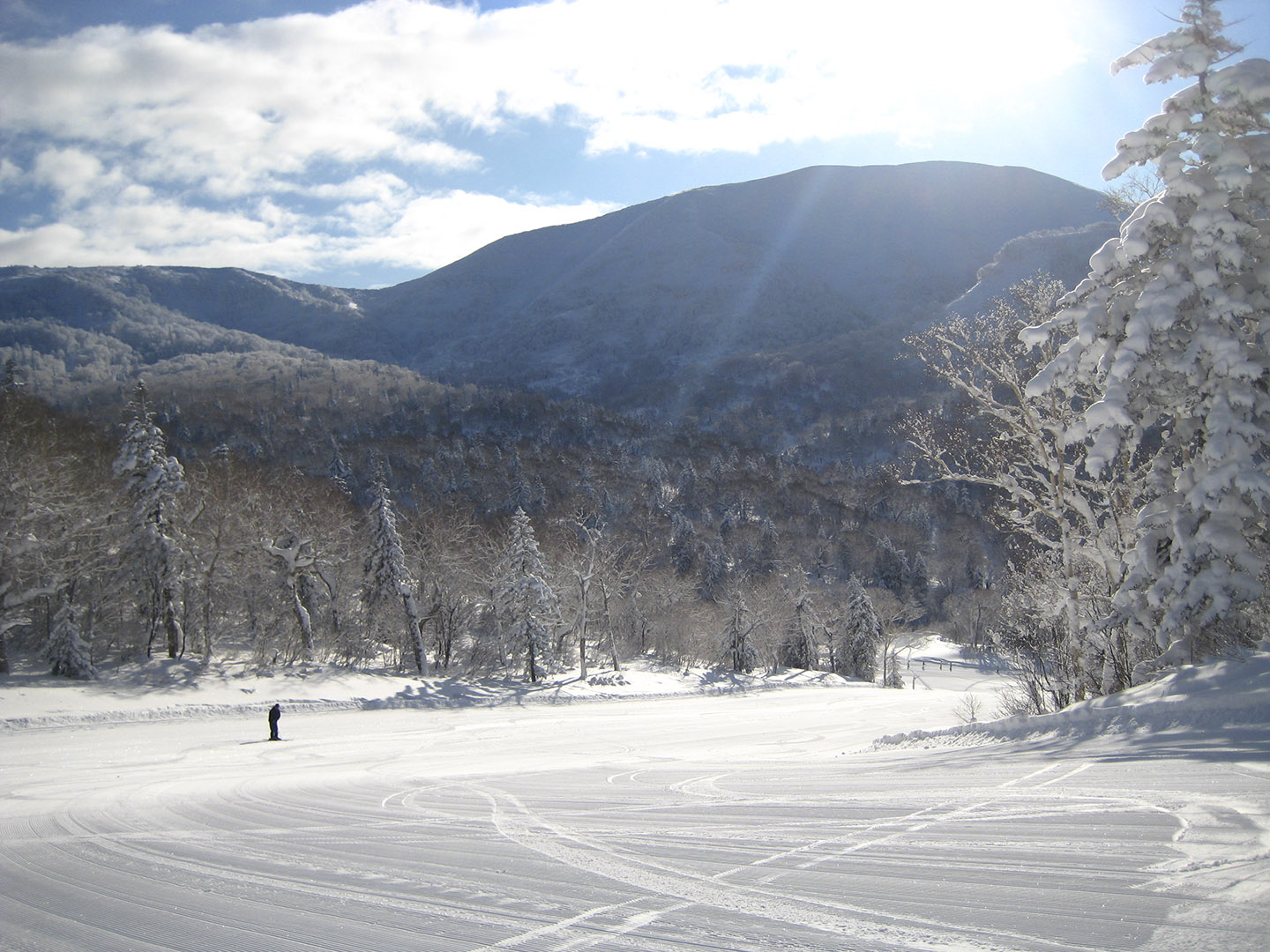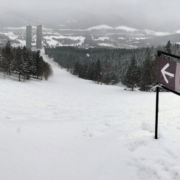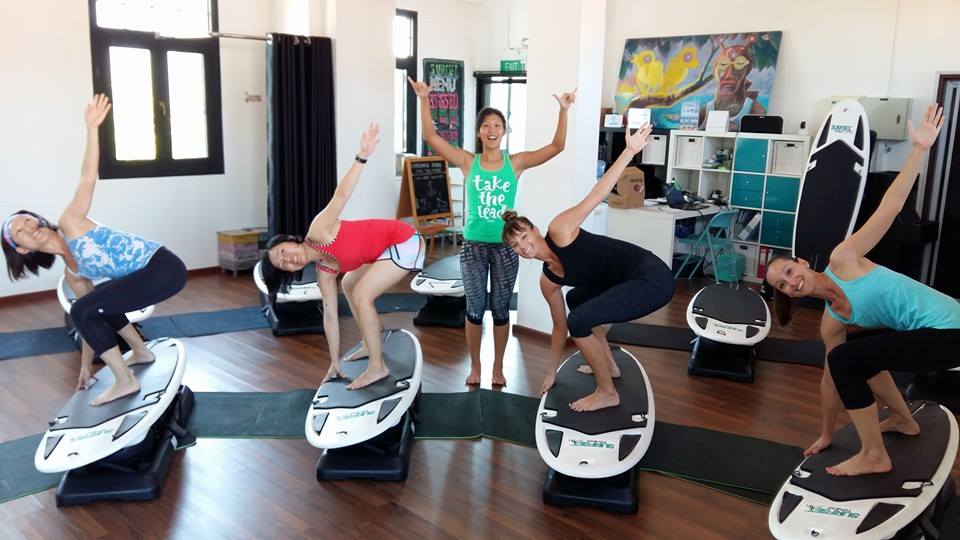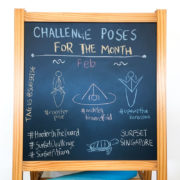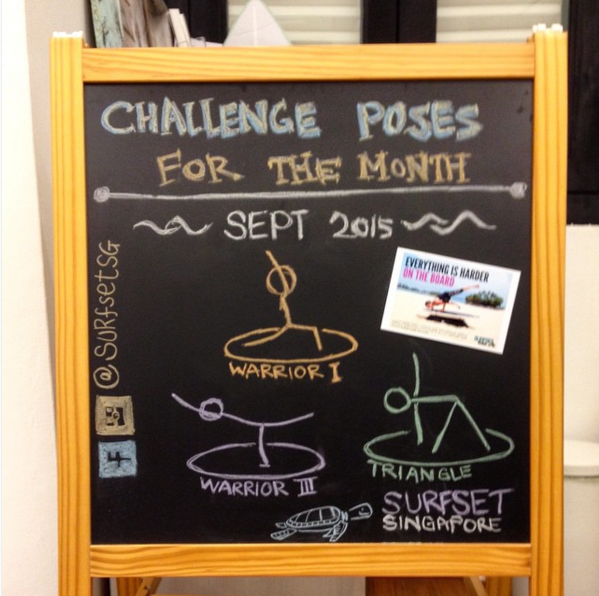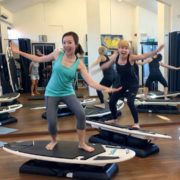Singaporean’s Guide to Snowboarding in Asia
UPDATE 2018: We’ve added in Club Med Tomamu, Hoshino Resorts Tomamu, and Karuizawa into our list of ski resorts, and updated the cost comparison table.
Some nights we sleep, and we can hear the smooth, muffled sounds of the board carving into the snow, and feel the satisfying thrill of whooshing down a mountain. Yes, we love snowboarding. Unfortunately, it’s an expensive hobby for a Singaporean, seeing how we have no snow here. Still, in the winter months, many Singaporeans flock to far flung lands to catch some snow. We’re one of them.
When talking about skiing and snowboarding, many people inadvertently think of the Swiss, French, and Italian Alps, or Colorado in the States, or Whistler in Canada. But these places are far. Thankfully, there are nearer places to ski and snowboard. These countries are easily accessible and are already favourite travel destinations with many Singaporeans – Japan and Korea.
We’ve been snowboarding in many places around the world, but we found that the experience in Japan and Korea are not that far from Europe. In fact, in some ways, we found it superior. Here, we’ll share with you some of the resorts we’ve been to, our personal experiences and opinions of them, and hopefully help you decide which would be a good option. We’ll list nine resorts:
- Yong Pyong, Korea
- Alpensia, Korea
- High1, Korea
- Niseko, Japan
- Furano, Japan
- Kiroro, Japan
- Club Med Tomamu, Japan
- Hoshino Resorts Tomamu, Japan
- Karuizawa, Japan
We’re hoping that we can help people, especially beginners, prepare for a snowboarding trip! This guide will be great for those who always wanted to try, but never figured out where to start, or those who want to know which resort would be a good choice.
What we’ll go through in this post:
- Snowboarding in Korea and Japan
- Differences of snowboarding in Korea and Japan
- Short review of the nine resorts as listed
- Price comparison table for the nine resorts
- Summary of resorts and which you should go to
- Tips for first-timers, in a friendly FAQ form
- How SURFSET Fitness can help you in your snowboarding
- Conclusion
Hopefully, this post will be able to help answer your questions about snowboarding and the logistics involved. Being a SURFSET Fitness site, we’d also like to see you get in shape for that snowboarding holiday.
Snowboarding in Korea and Japan
When it comes to the snow, resorts, facilities, accessibility, and familiarity to Singaporeans, no other countries in Asia are able to provide the same level of snowboarding experience as in Japan and Korea. Which one to go to is largely a matter of preference, budget, and purpose.
Differences of snowboarding in Japan and Korea
Price
Korea is going to be cheaper, most times. Lower air fares will make most of the difference. Also, food in Korea tends to be more inexpensive. Prices for accommodation vary from resort to resort, but we’ve found that generally things are cheaper in Korea. You’re probably going to spend about the same amount in either Korea or Japan for lift passes and equipment rental. A price table is provided at the bottom of this post.
Food
We’re not going to be able to decide on which we like more, we love both. However, we find that it’s easier to have Korean meals day after day for a week straight. Actually, with all the Korean and Japanese eating establishments all over Singapore, it’s not really necessary for us to go into this point.
Snow
You can definitely expect better snow in Japan’s Hokkaido resorts. Much, much better. In fact, Hokkaido is world renowned for the fluffiness of the snow. This doesn’t mean that Korea doesn’t have good snow – it’s just that their season starts later, their snow is more dense and packed, and the hordes of snowboarders tend to further compress it into almost ice. Beginners would be wise to wear protective knee and elbow gears in Korea, because falling in packed snow can hurt. In Hokkaido, it’s less of an issue.
Crowds
We’ve found crowds to be much less in Japan, but that is based on personal experience and dependent on the times of the years we went. However, it is pretty widely recognized that Hokkaido resorts are uncongested – this is great because we hate queueing for half an hour for the lifts.
Leisure and entertainment
We loved snowboarding in Europe because of the whole party atmosphere once you were back in town. Also, drinking schnapps in the middle of a run was a great way to get yourself motivated for more action. On the other hand, in Korea, they refused to serve us beer at the café at the top of the mountain because the waitress saw our snowboarding boots.
Leisure and entertainment are really all about what’s available at every resort, but for the places we have been to, only Niseko had that bustling ski town with tons of eating, drinking and other entertainment options. It’s still a far cry from Europe, though.
Equipment and infrastructure
Not much of a difference here, both countries have great equipment and infrastructure.
Accommodation
Obviously this is all about where you choose to stay, as every resort has its own choices of hotels, hostels, suites and the like. We preferred Korea as most of the resorts’ ski-in ski-out accommodation options had contained apartments with a living room and kitchen as default.
Ski lifts
Taking the ski lifts when learning to snowboard can be very intimidating. As a general rule, you have to have your snowboard strapped on to one foot while on the lift, and at the end of the journey board down on that foot. This is something you need to learn sooner or later, but we found that in Korea they allowed you to carry the boards on the lift by hand. This makes it much easier to get off the ski lift for beginners. This is a no-no for Japan (and most other places).
Snowboards vs Skis
Korea has a huge snowboarding culture. Everyone is snowboarding. In Japan, the ratio is much more in favour of skiers, maybe about 70% skiers and 30% snowboarders. Generally, we felt more safe boarding around skiers, who had less tendency to fall or brake suddenly, and less likely to swerve unpredictably. Some would also argue that snowboarders compress the snow and makes it less fluffy.
Off-piste and advanced skiing
With much more snow, you’re more likely to find good off-piste skiing in Japan, especially in Niseko. This post is really much more about the beginners, though.
Ski resorts in Korea
Yong Pyong
A short drive (roughly 2 – 3 hours) from Seoul city centre, Yong Pyong (not to be confused with Pyongyang) is the largest ski resort in South Korea. With 31 ski slopes and 15 ski lifts, it’s pretty big – but not particularly beginner friendly. Their beginner slopes are very short and limited, you can look forward to repetitive ski-lift-boarding loops.
For the intermediate and advanced boarders, there’s nowhere better in Korea. They have nice long trails, and it’s large enough to keep you occupied for several days.
See slope map | Download slope map
Alpensia
Just 5 minutes from Yong Pyong, Alpensia is a tiny ski resort with only 6 slopes! We found this place perfect for beginners to learn snowboarding, as they have excellent instructors (even though they can’t really speak in English, it’s not a problem). As a beginner, it can be frustrating to be stuck on the bunny slopes of a huge ski resort – you’d feel like you’re not getting the most of your money and the resort. It’s true. That’s what we love about Alpensia – we didn’t feel like we were missing out much while learning. For those who find need more challenge, Yongpyong’s just a shuttle bus ride away.
We stayed in the Holiday Inn, which was marvelous. Shopping for Korean instant noodles and eggs at the supermarket of the resort and cooking it in the kitchen of your room was one of our favourite moments.
High1
Further from Seoul than the other two resorts, High1 takes a four hour journey by bus. This makes it kind of far, but still pretty worth it, as it’s one of the newer resorts in Korea (Yongpyong is decades old). One annoying thing about most beginner slopes is how short they are – while learning, it’s almost like an endless repetition of taking the ski lift, and snowboarding for what feels like 20 seconds. This is the great part of High1 – their 4.2 km beginner slope reduces your ski-lift times.
Granted, this is a beginner slope, not a bunny slope, so you’re going to have to be somewhat steady on the board before attempting this.
There’s also a good mixture of other, more advanced slopes, but with a total of only 16 runs, advanced snowboarders may start feeling bored soon.
See slope map | Download slope map
Ski resorts in Hokkaido, Japan
Niseko
Ah, the one everyone goes to and everyone knows about. Niseko is huge and divided into four parts. Planning a trip to Niseko can be tricky, because it’s so big with all the different zones. There’s Grand Hirafu, Hanazono, Annpuri, and Niseko Village. However, staying at any one of these places means you pretty much have free reign of every zone of the entire mountain, as long as you’re good enough to take the lifts and gondolas right up to the top (good enough to board back down, that is).
When we were there, we stayed at the Green Leaf, which is in Niseko Village. It’s convenient but a bit quiet at night, and if we were to go there again, we’d opt for staying somewhere in the Grand Hirafu area. Travelling between areas at the mountain base was convenient as they had shuttle buses, but it’d be better if we could walk from hotel to restaurants or bars. However, we did note that the ski lifts at the base of Grand Hirafu were significantly more crowded, with waits of around ten minutes compared to no waits at Niseko Village.
Niseko is famous for a reason. It’s MASSIVE, with a lot of snow. They don’t even bother stating how many runs they have on their site; they just show you this map:
Slope info | Download slope map
Needless to say, they have everything for everyone, from beginners to off-piste snowboarders. There’s a green trail right from the top of the Niseko Village area that goes down all the way to the Hilton. You reach this peak just by taking the gondola, boarding down some distance, then taking a single chair ski lift called the Wonderland Chair. From here you get a magnificent view (the first image in this post – you can see the lift station at the right), and take a nice long time snowboarding down the green slopes. This is still pretty challenging, though – make sure you’re able to board proficiently and link your turns before you attempt this.
Be sure to look out for the signs, you don’t want to get into the wrong slopes. For example, there’s a nice black slope that also leads from Wonderland chair. It’s called Snorkel, and when we went down here it became quite clear why it was thus named. You could see the top branches of trees poking out from the snow, and this slope was pristine, ungroomed, and hell it was steep. It was also empty. Because the snow here is so untouched and so soft, falling here may mean a really hard time getting back up. We were glad we didn’t fall.
Intermediate and advanced boarders will have a great time at Niseko, navigating from zone to zone and finding their way back to base at the end of the day. They also have a great selection of ungroomed, but not too steep slopes where you can really feel the softness of the snow beneath your board. With the amount of trails available, we’d recommend at least 4 full days of snowboarding.
We do feel that there are better places to learn boarding though, as we can’t imagine coming all the way here with so many slopes, and only exploring two or three.
Furano
Furano is famous for its lavender fields, but when you’re here to snowboard you won’t see any. Probably the most inaccessible resort in this list, Furano was also the least crowded resort we’ve been to. It’s closer to Asahikawa airport than to Sapporo Chitose airport, and with flight options from Singapore mostly ending in Sapporo, it becomes quite a travel. Shuttle bus from Sapporo Chitose Airport takes 3 – 4 hours (1 hour from Asahikawa).
It’s not as big as Niseko with only 24 trails, but it’s a perfect size for a few days of boarding. What we loved was the Furano Ropeway – a 101 capacity super gondola that zips up the mountain at a magnificent speed, bringing you to the mountain top and covering a distance of 2.3 km in less than 5 minutes. At the end of this ropeway, you can take a nice all-green trail back to base, that is if you’re staying at the New Furano Prince Hotel.
Furano is large enough to be divided into two areas – the Furano zone and the Kitanomine zone. If you’re a beginner, you’ll spend most of your time in a single zone, depending on which resort you’re staying at (Kitanomine zone for Furano Prince hotel, Furano zone for New Furano Prince hotel). We’d heartily recommend the Furano zone as it’s more beginner friendly – the Kitanomine zone’s Kitanomine gondola doesn’t have have any beginner trails from the top, so beginners will be stuck on the chair lifts in the lower parts of the mountain. Besides, the Furano ropeway is at the Furano zone. To stick to the Furano zone, make sure to book the New Furano Prince hotel. We know, it’s rather confusing.
For intermediate boarders, you can venture between zones, but do take care to look properly at the maps and the trails – you’ll need to do some planning to get from one side to the other.
At the base, there’s a cute little snow-land area for kids, and some nice little wood cafes. We thought they were cute, but not really adding much to the experience. Furano also offers some nice places to go in the vicinity – we milked a mechanical cow and made our own cheese.
Slope info | Download slope map
Kiroro
On this list of Japanese resorts, Kiroro is the least complicated. It has just one base resort (Furano has 2, Niseko has 4 zones), and two mountain tops. This means you can pretty much go all around the mountain without being too concerned of where exactly you are, since all slopes end at the same place.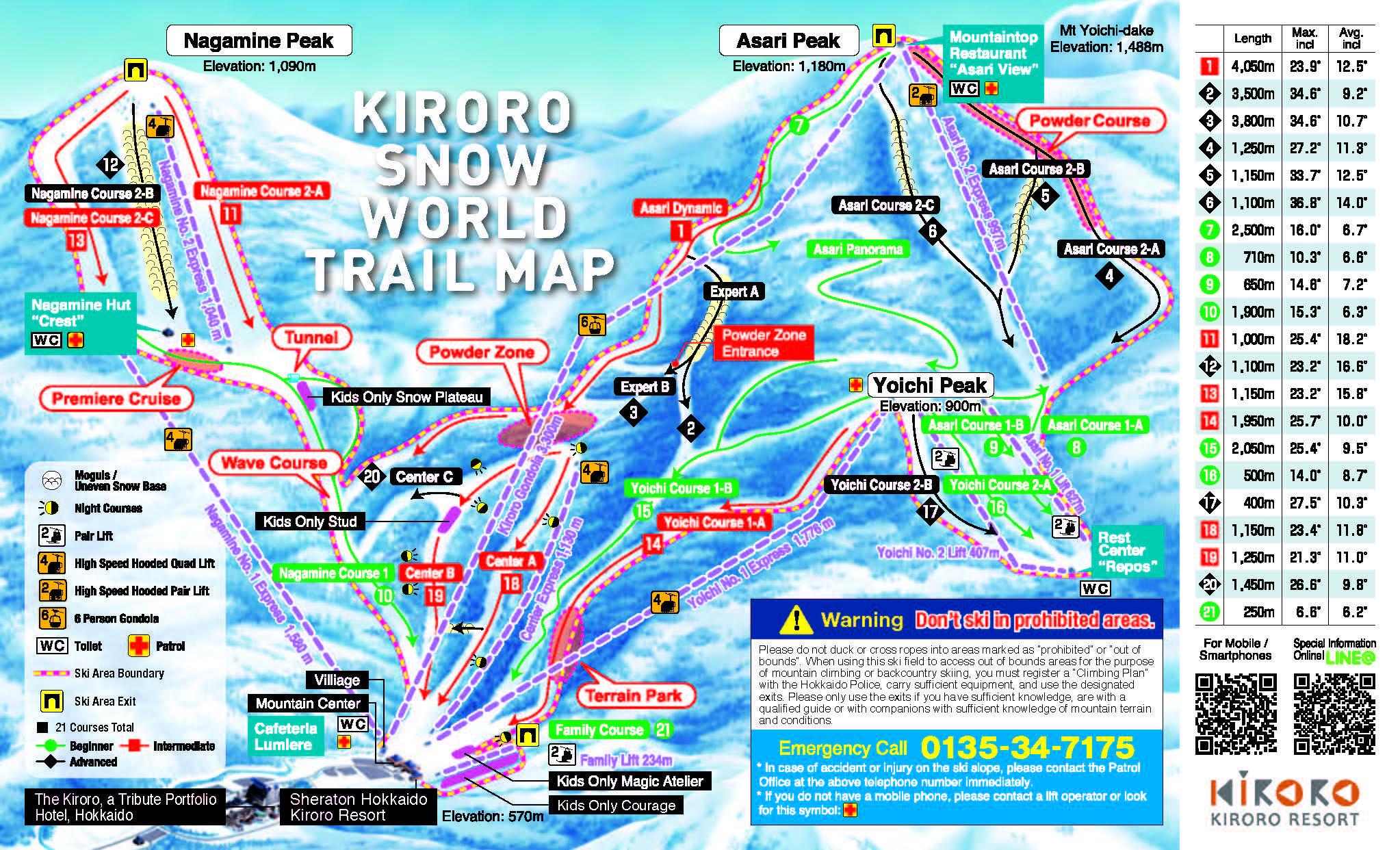
Slope info | Download slope map (jpg) | Download slope map (pdf)
Kiroro has 21 courses, evenly distributed between beginner, intermediate, and advanced, so this makes it a sizeable resort for all levels. There’s a nice, long green run from the Asari peak called the Asari Panorama, and it is super scenic with really breathtaking views. However, this trail is a little on the gentle side, and comes close to being flat at times. We wouldn’t really recommend boarding on this trail as you might just have to start walking.
You also have to be careful about the trails, as they are not always clearly marked. We ended up in a black ungroomed slope (we weren’t great boarders at that time) while coming down a red trail, without seeing any clear warnings or signs. We had fun tumbling down, and were delighted to see a Japanese snowboarder get almost entirely buried when he fell, board sticking high up in the air. Hilarious.
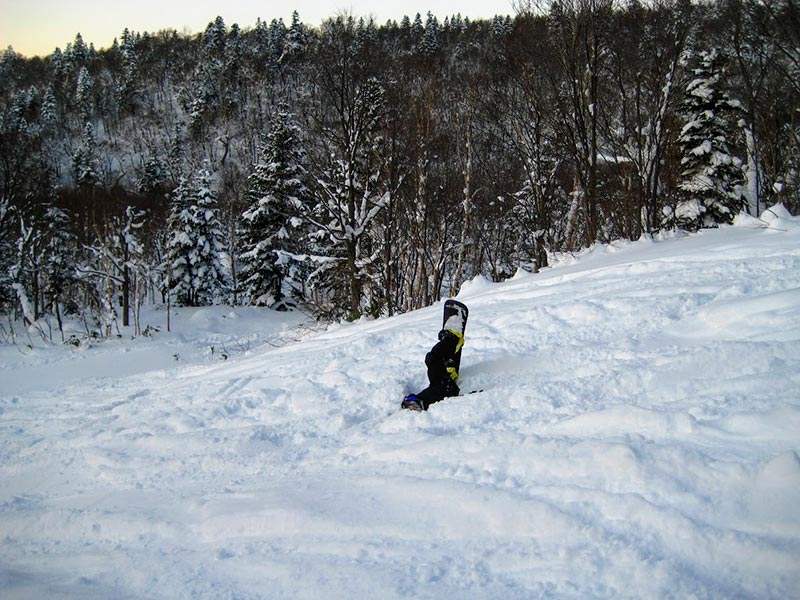
Like this.
Club Med Tomamu
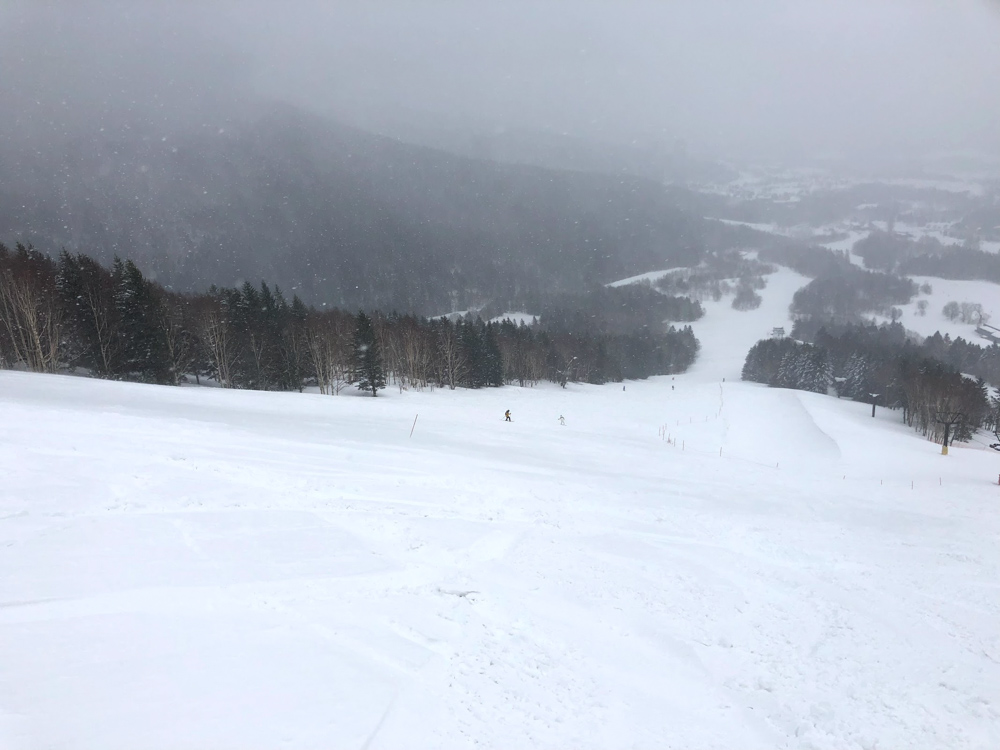
Club Med Tomamu is easily the newest resort in this list, and we were psyched up to go there in March 2018 (see our full review here). Opened in December 2017, their rooms are squeaky clean and new, and everything about their facilities is modern and feels untouched.
However, the newness of Club Med ends at the door leading to the ski lifts. The ski slopes and lifts are operated by Hoshino Resorts, the neighbouring resort that “shares” the mountain and is 5 minutes away by shuttle bus. This is a good thing and a bad thing – good being that Hoshino Resorts is a Japanese entity and takes care of things. Bad being that when it comes to the slopes, there’s a chance Hoshino may take care of themselves first.
In terms of ski trails and lifts, Club Med Tomamu has a rather sad total of 1 gondola and 5 lifts, which is honestly rather lacking when it comes to ski resorts in Hokkaido. It’s divided into two sides – the Club Med side and the Hoshino side, with lifts and trails that allow you to snowboard the whole mountain if you’re good enough.
The slopes are inconsistent, and green slopes sometimes have very steep parts, while blue slopes are too challenging for more beginners wanting to advance. Black slopes, naturally, are reserved for the better snowboarders – they are steep and ungroomed (which actually means a lot of fun).
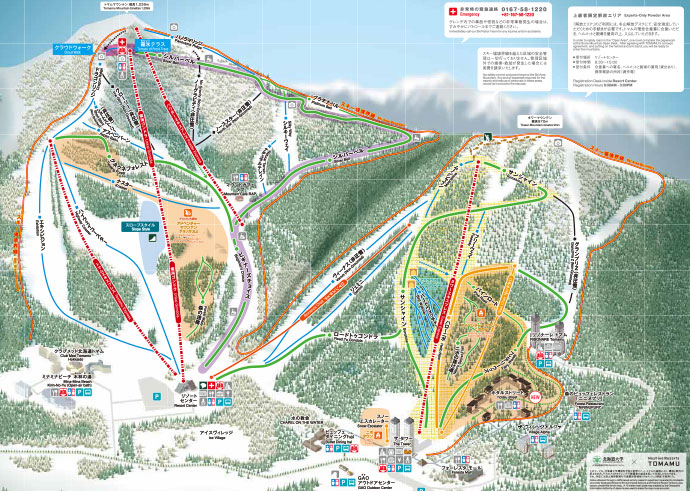
Slope info | Downlod slope map (pdf)
The thing about Club Med is their all-inclusive packages, but here we’re not sure it’s a good thing. Ski equipment is not included – be prepared to pay more to rent snowboards and boots. Snowboarding lessons are part of your package, which sounds great in theory, but is a bad idea in practice. Let’s spell it out:
- Since lessons are part of your package, everyone goes for them. Expect massive crowds for lessons, which means a very high instructor – student ratio.
- You don’t explicitly pay money for classes, which makes instructors less accountable when it comes to class quality. You can’t ask for $50 back for a lousy class if you didn’t pay that $50 outright before the class.
Our own experiences with their adult snowboarding classes were not good.
What they excel at is really their kids’ clubs and kids’ ski/snowboarding lessons. Mini club is included in their packages for children 4 to 9 years old. Petit club is chargeable, and for children 2-3 years old. Petit club does not have ski lessons.
The best part is that Mini Club and Petit Club takes care of your kids all the way from 9am to 5.30pm! That’s a lot of time for yourself to snowboard.
Ultimately, Club Med Tomamu is, in our opinion, only a good choice if want to bring your children.
We have a full review of Club Med Tomamu.
Hoshino Resorts Tomamu
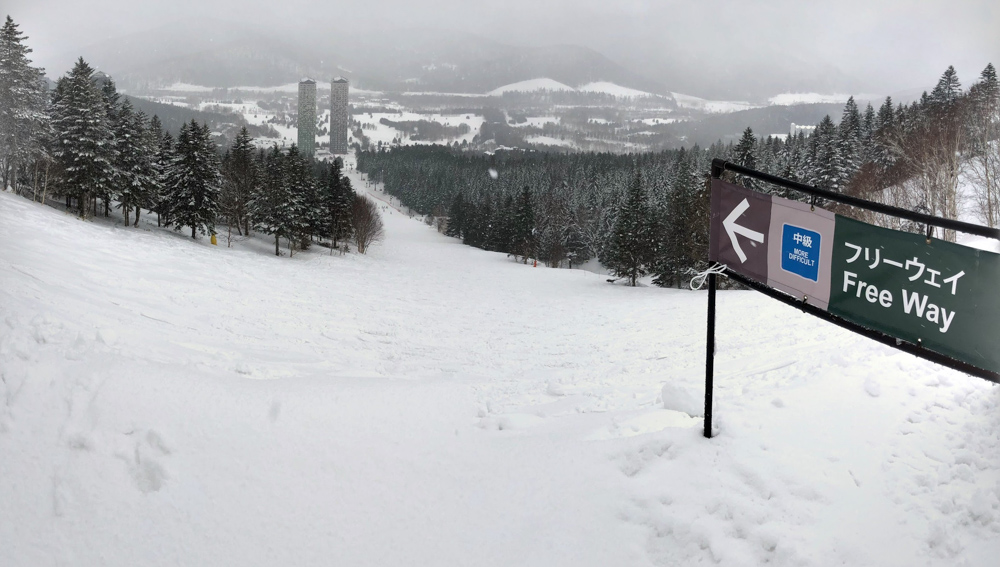
The two Hoshino Resort Towers in the background
Instead of Club Med Tomamu, you could also consider Hoshino Resorts Tomamu. They own and manage the lift operations of the Tomamu mountain, so whatever we said about Club Med’s ski slopes is applicable to Hoshino Resorts. This means a not-so-impressive number of 1 gondola and 5 ski lifts. However, this is reflected in their lower prices.
There are two major difference between Hoshino Resorts and Club Med:
- Club Med has their great Mini Club for kids, and takes care of children from 9am to 5.30pm. Hoshino only provides 2-hour lessons for your children, and no information on any child-care services.
- Hoshino is much cheaper.
The building itself was rather dated, and nowhere close to how beautifully furnished Club Med was. However, their building is closer to the ski lifts, and they have a Hotalu street which is truly ski-in-ski-out for your quick lunches.
Ski resorts in Honshu, Japan
Karuizawa Ski Resort
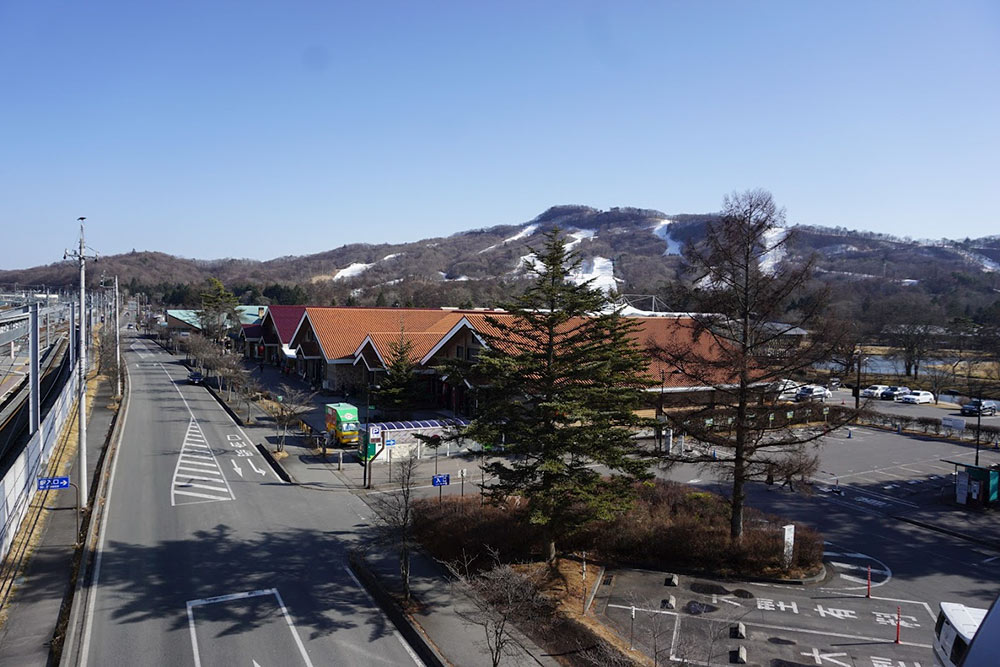
A View of the Karuizawa Ski Resort from the train station
Karuizawa is the most accessible Japanese resort on this list, and the only one on Honshu, the same island as Tokyo. It’s in the Nagano Prefecture, and very near to Tokyo – only an hour by Shinkansen (bullet train). It’s one of the only ski resorts where you can walk to the resort from a bullet train station. Shuttle bus rides are also available.
However, we doubt that Karuizawa is a snowboarding destination in itself. It’s probably more of a place where local snowboarders may go for a weekend to scratch an itch temporarily. Main reason? They don’t get enough snow through the season, so the locals would probably wait for the place to snow before heading over for a day trip.

We went in January, which is pretty much mid-winter, but it seemed like there was no real snow. All the slopes were made of artificial snow, and artificial snow is generally harder, icier, packed, and just not as fun to board on. It’s easy to tell – you can see all the surroundings of the slope – nothing is covered in snow except for the slopes themselves.
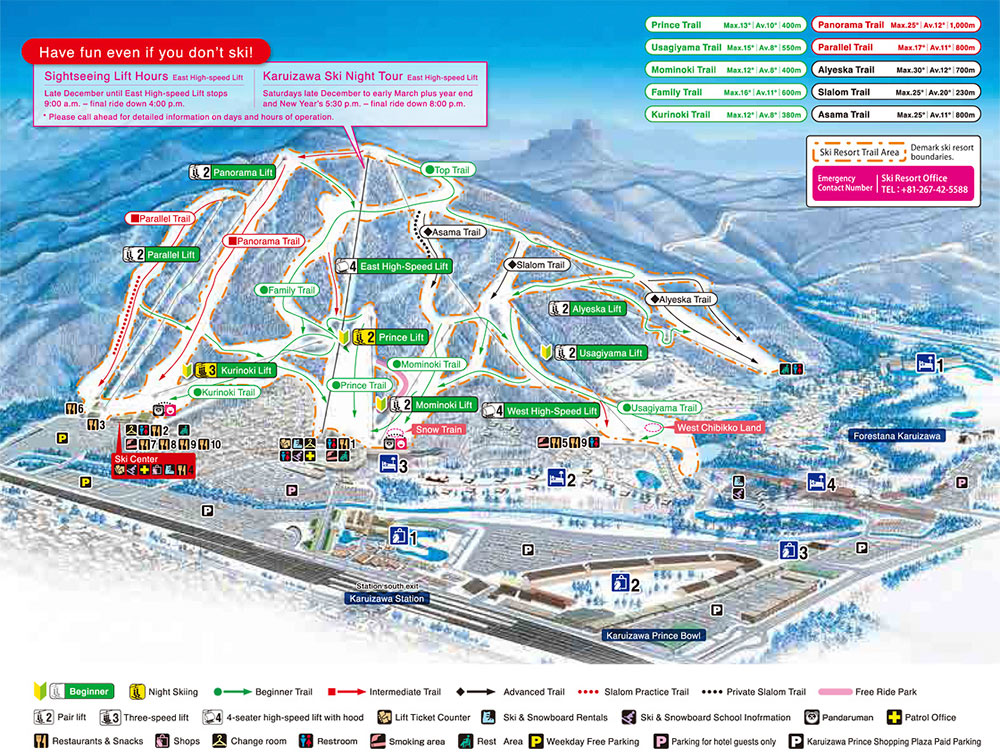
Slope info | Download slope map
Their slopes and lift systems are decent, though. They have 9 lifts (more than Tomamu, by the way), and quite a number of runs, mostly green. It’s great for beginners, with a lot of bunny slopes and green trails to explore.
We find that first-time snowboarders are mostly reluctant to dedicate an entire vacation to snowboarding, since there’s a chance they might not like it. In this case, Karuizawa makes a great destination. It’s close to Tokyo, and can be part of a Tokyo holiday – no need to make that commitment of flying further north to Hokkaido (where there are less things to do). Its plentiful green runs and good network of lifts makes it a good choice for beginners. Just keep in mind that the snow here isn’t like what you get in Hokkaido, so it’s harder and may be more painful when falling.
More advanced boarders are likely to be easily bored here, especially those who have been spoiled by Hokkaido snow.
We didn’t ask about snowboarding group classes when we were at the resort. Right now, online, it seems like there are no group classes, only private classes which are very expensive.
In terms of accommodation, Karuizawa is run by the Prince group, and is similarly confusing as Furano (also Prince). There’s Karuizawa Prince Hotel West, Karuizawa Prince Hotel East, The Prince Villa Karuizawa, and The Prince Karuizawa. Oh my. The worst part is that on the ski map, you can see the accommodation icons with numbers 1 to 4 – we assume these are the four hotels, but there’s no legend of what is what.
We stayed at the cheapest, Karuizawa Prince Hotel West. After we booked it, we realized that there was no information on whether it was a ski-in-ski-out resort, and got worried. Fortunately, we can report here that yes, Prince Hotel West is ski-in-ski-out, with a lift right outside the lockers. However, this lift is closed for night skiing, so if that’s important to you, you may want to pick one of the more expensive options, or just plan your skiing well.
There are also a few snow parks for children to play in. Some of them have sledding.
Plus point – at the bullet train station, there are many warehouse outlets and great for shopping! There’s a Burton outlet store, and we bought a pair of Burton snowboarding boots at prices cheaper than in most online sites. It’s also tax-free – bring your passport. There’s also a big Nike store, and prices are pretty good! You can easily spend half a day at these outlets.
There are also eating options in this area. We had our dinner here, and was able to walk back to our hotel at Prince Hotel West. It took around 20 minutes, and it was cold and fun.
Resort price comparison
Here’s a table of prices we got from the official websites as at August 2018. You’ll see that prices are pretty much similar throughout, so the only real difference in cost is more of accommodation and air fares. We didn’t compare accommodation prices as these are highly variable and dependent on dates and availability. Some notes:
- The Niseko lift pass is the full Niseko United lift pass. You can buy lift passes for only certain sections (e.g. only Grand Hirafu area), which are cheaper.
- In some resorts, snowboarding classes include equipment rental and lift passes. Make sure you find out first!
- Many of the resorts also offer cheaper consecutive day passes and rentals. Take the time to do your own full planning.
- Sometimes, the full day lift passes includes night skiing. Sometimes, it doesn’t. In this table, we do not include night skiing if it’s an extra charge.
- There are surcharges for peak period for some resorts. We do not include this charge.
Our table is provided as reference only, and should not be taken to be fully complete or accurate.
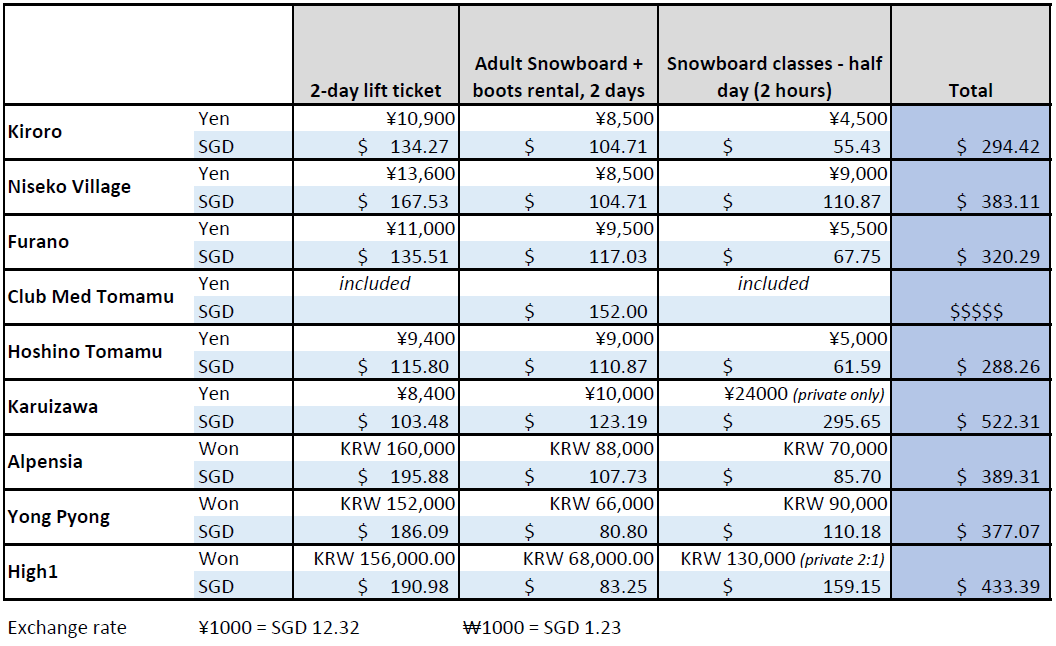
The cheapest resort is Hoshino Resorts Tomamu, and this is likely due to the limited slopes and lifts. However, the snow there is very good, so it’s great for beginners looking for value.
Kiroro is the second cheapest of the resorts based on these criteria, and considering their snow, slopes, and lifts, they really provide the best value. Karuizawa is the most expensive, but the figure is mostly inflated from the private snowboarding lesson. They make no mention of group classes on their website.
Club Med Tomamu has lift tickets and classes billed into their total package price, so it’s not easy to compare. Still, they are the most expensive for equipment rental, and that should give you an indication of relative value. We’re very sure they are one of the most expensive resorts once you account for everything. If you don’t have children, forget about Club Med Tomamu – Hoshino resorts gives you a better deal any time.
In general, Japan looks cheaper than Korea. It could be currency effects. In our last review of prices in 2015, Korea and Japan were almost on par, with Korea edging out slightly cheaper.
Summary of Resorts
There are tons of other snowboarding resorts and options in Korea and Japan, and even more around the world. What we have listed here is really a microscopic view, but we’re sure it’s helpful as these are pretty much the most popular and most obvious choices to any Singaporean.
Ultimately, what we would recommend is this:
- Total beginners looking to spend two days learning to board – Alpensia, Karuizawa (first, check on group classes)
- Total beginners looking to spend about a week learning to board – High One, Hoshino Resorts Tomamu
- Beginners who want to have lots of trails to explore – High One, Kiroro, Furano, Niseko, Karuizawa
- Intermediate boarders who are on a budget or who prefer less travelling – Yongpyong, Karuizawa
- Intermediate boarders also looking for more fun at night – Niseko, especially Grand Hirafu
- Intermediate and advanced boarders looking to board for an extended period of time – Niseko
- Anyone who wants a lot of snow and no crowds – Kiroro, Furano
- Family snowboarding trips with children 4 to 10 years old – Club Med Tomamu
Tips for first-timers – FAQ
We’ve been asked many questions about going snowboarding. These are the most common ones, and also the most basic, but we find that they’ve helped many people out when they have no idea what to expect. These are more to do with the logistics, and less to do with how to actually snowboard.
What should I wear? It’s going to be cold, right?
Being Singaporeans, most first-timers aren’t sure how to dress up for snowboarding. The natural instinct is to bundle up in many layers – it’s gonna be cold! And all these layers means less pain when I fall!
For us, we wear three layers tops – thermal wear, fleece jacket, and snowboarding or ski jacket. For the bottom, just thermal wear and snowboarding / ski pants. This is sufficient for us even when the wind is howling and temperatures drop below -7 degrees C, albeit it might get cold on the ski lift. While snowboarding, it’s almost never a problem. If the sun is shining and the temperatures are relatively high (around -1 to 3 degrees), we’d skip the fleece jacket and wear two layers. Anything more and we’d start to sweat. Keep in mind that these are the proper snowboarding jackets.
We’re pretty warm blooded, though, so if you’re afraid of cold you could try layering up a little bit more, and adjusting for your own comfort.
There are actually specialized inner wear for snowboarding and skiing in the market, but we’d much rather buy something that we could use with our normal winter wear. It’s worked fine for us so far. Uniqlo’s a great place to get thermal wear and fleece jackets.
You’ll also need proper gloves, goggles, and something to cover your face if it gets windy, like a balaclava or one of those stretchy face covers.
You’d probably want to wear some thick socks, but don’t wear three layers. We’ve boarded in office socks and it works just as well.
I’m just starting out learning. I can get by in my normal winter jacket, right?
Please don’t try it. Learning to snowboard means learning to fall, and in normal winter jackets, you’ll soon get soaked with snow melting in your innerwear. Maybe even soaking into your jacket.
It’s slightly more acceptable to attempt this while skiing since there is less likelihood to fall, but you have to expect to faceplant a few times while learning to board.
If I’m just going to try it out a bit, will I need all the other fancy snowboarding stuff like gloves, goggles, and balaclava?
You’re definitely going to need proper snowboarding or skiing gloves. Remember, your default position is sitting down in the snow, and pushing yourself up with your hands. Not wearing gloves is an awesome way to get frostbite. Wearing non-waterproof gloves is also going to suck. Wearing waterproof, but shorter gloves would mean a lot of snow getting trapped at your wrists. We’ve felt it before even with proper gloves – a sudden dull pain from our wrists, only to find it packed with snow after a big fall.
You probably won’t need goggles if you don’t intend to progress beyond the basics of moving and stopping. The moment you go up a ski lift, please have your goggles ready. The cold air can hurt your eyes, and if you fall smack into the snow with your face, it’d be more pleasant if you have your goggles on.
A balaclava is nice to have, but only really necessary once you start picking up speed.
Can I wear kitchen gloves and swimming goggles?
Please don’t! Kitchen gloves aren’t waterproof. Swimming goggles could plausibly work, but you would look really silly.
Helmets are for pansies. Do I need one?
You don’t need one in the sense that most resorts won’t force you to wear one. We always wear one and we’d recommend it, because our brains are very important to us.
How about protective gear like knee, elbow, and butt pads? Isn’t falling in snow like falling into the arms of angels?
You don’t really need protective gear as long as you don’t mind a few bruises. Falling into fluffy snow really isn’t a problem, and sometimes we like to throw ourselves into thick snow just for fun. Like you say, it’s like angel hugs. However, on groomed slopes and in certain, warmer conditions, the snow can pack into hard ice, and falling there really hurts. We’ve had super bruised knees when boarding in High1 because the snow was almost not snow anymore – just ice.
A friend of ours once hurt her tail bone falling on her butt – apparently women have more exposed tail bones. A butt pad could help.
Take note that most times you won’t be able to rent these stuff – in fact in Japan we didn’t even see it being sold. Your best bet is to buy them beforehand, or dig out your old rollerskating gears and bring it with you.
Do I really need to rent all these clothing and stuff?
You don’t have to rent them. You could buy them. In fact, you’d probably save money going on Taobao, Decathlon, or Lazada, to buy some cheap gear. Typically, a few days’ rental of any of these equipment – jacket, pants, goggles, gloves, or helmets – will cost enough for you to have bought them in the first place.
Of course, don’t buy them at the ski resort themselves. If you really need or want to buy them when you’re already there, try going to the nearby towns, where there most likely will be ski and snowboard shops selling equipment. It’d be less overpriced.
I can do board sports pretty well. Think I can wing it without lessons?
We don’t know, but we think it’s really tough, especially if you have no guidance at all. If you have experienced snowboarding friends who are willing to teach you, maybe you could get by. We didn’t have such luxuries, so we went for lessons. And we’re glad we did.
Most people would agree – it’s not impossible to learn snowboarding by yourself, but it’s much faster if you take a class. The general sentiments we’ve seen are that what you can learn in a day of lessons could take weeks trying to figure it out alone. Furthermore, without instruction, it’s easy to get demoralized and give up. We think money spent on lessons is money well-spent – it’s actually cheaper to pay for classes, rather than waste a few days flailing about.
Also, one of the greatest hurdles to overcome as a beginner snowboarder is getting on and off the ski lift. It’s extremely daunting, and you’re most likely going to fall a couple of times. Then you’d panic because there are people coming off behind you and you have to scramble away like a rat to the sides. Then the entire ski lift stops for your safety and everyone on the lifts will be thinking, darn it, shouldn’t have taken the beginner lift, or hope I don’t end up like that.
One of the main reasons for taking classes is to learn to use the lifts. And if anything, having an instructor around when you’re falling while coming off the lifts makes it a lot safer and less embarrassing.
OMG how am I going to get on and off the ski lifts?
We hated it when we were still bad at it. You’re just going to have to practice, and you have to expect falling a few times. Oh yes, this is also where a helmet could come in useful. Good luck!
Can I learn snowboarding without falling?
No.
Should I snowboard or ski?
We do both, but we’re much bigger fans of snowboarding. It’s harder to learn, but once you have the basics, it’s actually easier to overcome steep slopes while snowboarding.
Generally, it’s much easier to just get into a pair of skis and start cruising about slowly without any lessons or just with very brief guides. Getting on and off ski lifts are also much more pain-free. The most basic way to slow down on skis, the A frame, is easy, stable, and controllable as long as you’re not too fast.
If you only have a few days and just want to whizz about slowly in the resort, by all means stick with skiing. Learning to snowboard is a very conscious effort that will take at least two days (at least for us). If you don’t have at least a full day, maybe you shouldn’t try snowboarding. It’s demoralizing not being able to master the basics, and chances are that by your next trip, you’ll have to start over again.
You make it sound so tough. Should I give up on my idea to try snowboarding if I only have two days?
No! Don’t give up! Our first trip ever to snowboard was only two and a half days, and it was such a great experience that we were quickly making plans to go to the next place. For us, we had a 4 hour lesson on the first day, learning the basics, the terminologies (heel vs toe), and learning to take the ski lift. We practiced and practiced through the remainder of the first day and through the second day. By the third (half) day, we still hadn’t gotten the proper feeling of linking turns, but we were able to manage it once or twice. However, we were by that time proficient enough (barely) to get on the ski lifts and board down, and it was good enough to really feel motivated for more, since the progress was there.
How long should I stay in the resort for?
We find that it’s very common that most people don’t think of snowboarding as a trip in itself, instead it’s more of an auxiliary activity to supplement their vacation. With that mindset, most people plan it so that they only stay 1 or 2 nights at a ski resort, spending only 1 or 2 days skiing or snowboarding.
If you’re serious about learning snowboarding, we’d suggest at least three nights at the resort to achieve at least three days of snowboarding. It’ll be even better if you could schedule another snowboarding trip within a few months so you can recall the muscle memory.
Personally for us, we plan trips around snowboarding, not the other way around. We typically spend around 5 days snowboarding at the resort, and the entire holiday could be just 7 days.
Is there anything else I should do to prepare myself for snowboarding?
We found it useful to watch instructional videos on snowboarding. There are plenty of great resources on YouTube, but our favourite is SnowProfessor. They go through in great detail the basics, covering the simplest steps, including how to wear your board. Establishing which of your legs is dominant (regular or goofy) is pretty hard too, so maybe you could read some tips online on how to find out. Very importantly, train up and get fit before the trip!
Do I have to train up for snowboarding? It doesn’t look very tough – you’re just using gravity to move!
Technically, no. You don’t really have to train up for anything, not even for a marathon, if you don’t want to. The only difference is how well you perform during the activity.
Snowboarding might look easy and effortless when you see people do it, but that’s because these people have spent countless hours mastering the control of their boards. When you’re first starting out and learning, it’s a really physical activity. And that’s because a very, very tiring part of snowboarding is falling and getting up, and falling again, and getting up again.
We always encourage people to take up some exercise to build up their physical fitness before attempting snowboarding, and the main reason for that is because it’ll help you enjoy yourself more. It’s hard to feel motivated when you’re sitting out on the snow breathless and feeling hopeless, so being fit will help you learn better, learn faster, and get to the fun part of whizzing down mountains sooner. To learn how to improve your body in preparation for snowboarding, scoot on down to our next section:
How SURFSET Fitness could help in your snowboarding
Confucius say – to train for board, you must be on board.
OK, he said no such thing, but SURFSET, surfing, and snowboarding are all board sports. Granted, there are many differences – control of the board isn’t exactly the same, but there are more similarities than you’d might think.
Balance
This is really the absolute principle guiding both board sports. If you’re not able to balance on the board, you’re going to fall.
SURFSET Fitness is the only fitness programme where you can actually train your balance while standing on an unstable board. You need to find your equilibrium with every movement you make on the board, and this is exactly the same you have to do when you’re snowboarding.
Embrace instability in your workouts, and you’ll find that when you’re strapped into a snowboard moving through the snow, you’ll feel so much more at home.
Core and body control
You’re going to need that core muscles to work, and to work well. Moving on a snowboard isn’t just keeping your body straight and moving downhill – the work involved in snowboarding is controlling your speed, and that means turning. Core and body control are absolutely critical in how you control your board, so you need to get your physique up to speed beforehand.
Even our basic Balance classes at SURFSET focuses a lot on the core, but for best results, come try out our SURFSET Core sessions.
Leg muscles
One of the worst things that could happen is when every part of your body is in a state of exhilaration, feeling the surge of adrenaline while you’re blazing down the slope, but your legs are buckling and screaming, NO MORE! NO MORE!
Then you topple because your legs can’t hold it any longer.
Naturally, snowboarding is pretty intense, especially on your thighs. You’ll need to engage all the muscles in your legs to make your turns; and even when moving directly straight, you’re going to have to keep your knees bent and support the weight of your body, all the while being poised to change your direction, slow down, or stop.
All the squats, jack ups, and hops done during our SURFSET sessions are not for naught, then. SURFSET really trains all the major muscle groups in your legs, and the instability of the board ensures you train them in a way that enables you to adapt and react to dynamic movements.
At the same time, snowboarders need to have strong ankles to pivot for balance compensations in carving. How do you train your ankles?
Many of our participants at SURFSET Fitness would come to a sudden realization that there are actually muscles controlling the ankles. They’d notice this the day after an intense SURFSET session, when they feel the ankle muscles aching, something they have never felt before. We felt the same with our first experiences with SURFSET, too.
This is another benefit of instability training. Being on the board, your body has to fire up all the stabilizer muscles to ensure you don’t lose your balance, and your ankles are a critical key to that. SURFSET is an absolutely superb way to get your ankle strength up to prevent injury during sports and snowboarding – and that’s even more important considering that ankle sprains is one of the most common injuries suffered by snowboarders.
Arm strength
Arm strength? You’d scoff – I’m not going to snowboard on my hands, fool! Well, we’d agree with that, even though we’d love to see it. Even so, you’re going to need arm strength, especially when you’re learning. Remember all the planks, push ups, and downward dogs you did on our SURFSET boards? These are all indoor training for the times you’re sitting on the snow, getting back on your feet.
For people who have never tried snowboarding, it’s hard to imagine how difficult it would be to get up to a standing position. People who have tried will know the challenges. Your boots are strapped into a board without freedom of movement. Your hands, while pushing yourself up, keep sinking into the snow. And the moment your butt is off the floor, your board starts sliding out from under you.
You just need to know this – you’re going to need a lot of endurance and strength in your arms to get up. And when you’re learning, you’ll be on your butt a whole lot of time, so you need to get used to getting up.
Exercises targeting the arms are a core component of every SURFSET session. Planks, duck dives, and pushups all work on the same principle – using your arms to stay off the ground.
Cardio
Snowboarding isn’t particularly cardio intensive, at least not in the same way that running a marathon is. Still, it’s easy to get breathless pretty quickly, and it still is a very physical activity. Furthermore, you may have to take into account other things like altitude and temperatures, so it’s best to be physically fit.
All our SURFSET sessions are cardio intensive, but if you want to ramp it up a notch, try our SURFSET Sweat classes.
Conclusion
Wherever it is that you choose to go, remember that snowboarding is no walk in the park. It’s important to get that fitness level up, so you don’t waste your precious holiday time panting in the snow after the sheer exertion of bending over, strapping in your boots.
Whether or not you’re a total beginner or an experienced snowboarder, there’s no place better to get your body prepped for snowboarding than at SURFSET Fitness. The core and balance training from our sessions will definitely benefit your snowboarding skills, and the cardiovascular aspect will ensure you’re in tip-top health to have your game on all through the day.
We have personally experienced the positive impact that regular SURFSET sessions made in our balance and confidence on a snowboard, and the progression thereafter was pretty awesome. Just so you know – we’re not extreme snowboarders (maybe not even very advanced), but so far we’ve handled the advanced black slopes with moderate ease.
To learn more about SURFSET Fitness, check out our website by clicking here or the big SURFSET logo at the top left of this screen. You can book a class on our website, or get in touch with us here on through Facebook.
Writing this long post got us really excited for our next snowboarding holiday. Time to do our research and break out the piggy banks – and when we head to a new resort, you can look forward to our review of the place. If you have your own comments, reviews, or recommendations on snowboarding or on ski resorts, we’d love to hear from you. Comment below, or get in touch with us through the phone, email, or Facebook. See you on the board (SURFSET or snow) soon!
